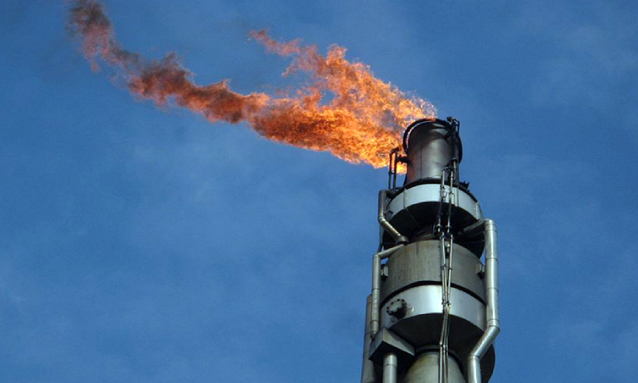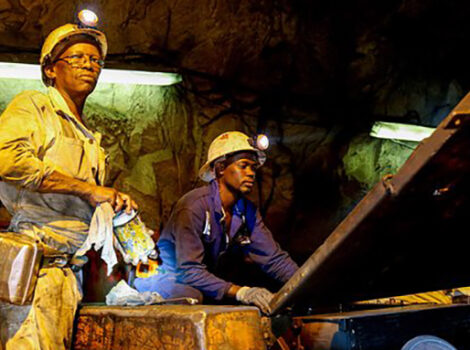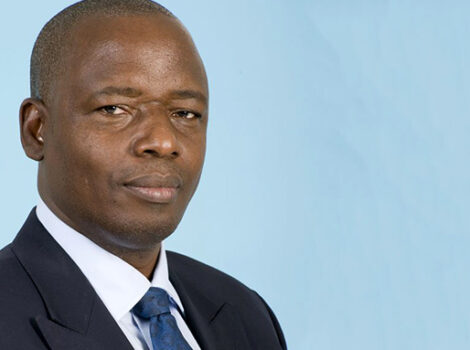
Natural gas is expected to play a central role in supporting Africa’s drive to achieve electricity connection for nearly 600 MM people without access to the grid, to reduce widespread reliance on coal for power generation, and to fast-track the continent’s slowed industrial expansion.
Although more than 26 countries on the continent have significant natural gas potential, many of them do not have adequate access for end-users. Additionally, frequent power outages and energy rationing have negatively impacted the economic performance of these countries.
Some countries are using more coal to generate electricity, despite being signatories to the Paris Climate Change Agreement. However, other countries – including South Africa, Namibia, Mozambique, Ghana, Côte d’Ivoire and Botswana – have expressed interest in utilising their gas resources by investing in gas-to-power projects.
These projects, which will be funded largely through public-private partnerships, will generate additional electricity to address access gaps and meet increasing demand from both population expansion and the growing manufacturing sector.
South Africa targets gas-to-power projects. With a power generation capacity of 51,309 MW, South Africa has proposed a 20-yr integrated resource plan (IRP) outlining a new power generation program to 2030. The program will use various renewable energies and natural gas to produce electricity. With 91.2%, or 46,776 MW, of its generation coming from coal-fired thermal power stations, South Africa has included in the IRP gas technology for the generation of 6,000 MW from combined-cycle gas turbines. Of this, 3,000 MW are expected to come from LNG to power, 726 MW from gas to power and 1,500 MW from non-specified gas.
The IRP gas plan may not come online until after 2030, however. South Africa, which consumes an estimated 5.411 Bsm3 of gas at present, has yet to commence exploration of its Karoo basin, which has an estimated large potential for unconventional shale gas of 13 Tft3.
The role of gas as the preferred fuel for electricity generation in South Africa is expected to grow in the future, despite possible delays to its gas-to-power program. The country plans to decommission coal plants with a capacity of 28 GW by 2040, and another 35 GW of capacity will be decommissioned by 2050. Together with imposed emissions cuts, the decommissioning measures mean that coal will contribute less than 30% of energy supplied by 2040 and less than 20% by 2050, according to South Africa’s Ministry of Energy.
The use of liquefied petroleum gas (LPG) in South Africa has impacted consumption of electricity at a time when the country’s power utility, Eskom, is under pressure to supply more power through its constrained transmission infrastructure. South Africa has seen a partial reduction in electricity demand because of trends such as the increasing use of LPG for cooking and space heating. A large share of South Africa’s gas supply comes through an 865-km pipeline from Mozambique. South African chemical giant Sasol operates natural gas production in Mozambique’s Inhambane Province, which holds proven reserves of 2.6 Tft3.
Mozambique develops infrastructure. Mozambique is harnessing its gas resources for electricity generation to boost domestic access, exports and trade in southern Africa. The country has an estimated installed power capacity of 2.6 GW and aims to connect 50% of its population to the grid. Mozambique holds more than 180 Tft3 of natural gas reserves in its Rovuma basin, discovered by Texas-based Anadarko (Area 1) and Italian oil major Eni (Area 4). The country is developing the 400-MW Temane power plant (also known as Mozambique Gas-to-Power) as an independent power project. The project is planned to come online in early 2023.
Separately, Mozambique previously awarded a concession to GL Africa Energy (UK) Ltd., a UK firm focusing on energy solutions in southern Africa and the Great Lakes region, to develop a 250-MW gas-powered electricity plant. The plant will source feedstock from Mozambique’s Rovuma Basin. However, even with the large natural gas resource available in Mozambique and the proposed gas-to-power projects, the World Bank previously cautioned that there is likely to be “…a series of complex tradeoffs to be made between the different uses for this gas, between exporting gas and exporting power to the region, and between the level of economic rent to be achieved in the power sector and the gas sector.”1
The World Bank also observed that the cost of one major, proposed hydropower generation project, the Mphanda Nkuwa hydropower plant, would be considerably lower than the cost of a large gas plant of similar capacity. In line with the intent to scale up use of gas for power generation, Mozambique’s national power utility, Electricidade de MoÇambique (EDM), will need to consider the Hidroelectrica de Cahora Bassa (HCB) contract with South Africa’s Eskom, which is expiring in 2029. HCB is Mozambique’s primary hydropower company. According to the World Bank, an additional 1,575 MW of power generation could become available to EDM.
Namibia, Botswana looking toward promise of gas. Uncertainty has also surrounded proposed gas-powered electricity projects in Namibia and Botswana. Regulatory authorities are grappling with defining the roles of gas and coal in the mix of long-term electricity purchasing contracts already in place. In Namibia, the government is keen on the development of the 850-MW Kudu gas-to-power project, the first combined-cycle gas turbine power station of its size in sub-Saharan Africa, to facilitate the anticipated monetisation of the offshore Kudu gas discovery with estimated proven and probable reserves of 3.3 Tft3.
However, reports have surfaced that the project has been resized to 442.5 MW after offtake negotiations with Eskom and Copperbelt Energy Corp., a Zambian electricity supply company, were dissolved. Namibia has an installed power generation capacity of 550 MW and imports 60% of its electricity needs. However, the country’s power utility, NamPower, admitted previously that the development of baseload generation from local energy resources has proven difficult. Even with the resizing of the Kudu gas-to-power project, an economic analysis of NamPower’s existing electricity tariffs indicates that associated gas-to-power projects would be economically challenging. Furthermore, a legal hiccup is holding back Namibia’s Walvis LNG project after the tender process for the project was challenged in court.
In Botswana, Australia-based coalbed methane (CBM) developer Tlou Energy is making progress with its plan to generate gas-powered electricity at its Lesedi CBM project, where the company holds 10 prospecting licenses covering an area of approximately 8,300 km2. Tlou Energy estimates that the Lesedi project has approximately 3.2 Tft3 of certified contingent gas resources.
The company is among those bidding to develop up to 100 MW of power, using CBM as an independent power producer. Tlou’s first bid in 2017 was annulled, and the company was told to bid afresh alongside other bidders.
Ghana, Tanzania tout clean energy. The two countries have demonstrated success in harnessing their natural gas resources for the generation and supply of clean energy to support economic growth and promote regional electricity trade.
In 2017, Ghana’s thermal plants utilised 43,360 MMsft3 of gas, with 83% of this volume coming from the Atuabo gas processing plant and Nigeria providing the rest of the gas. Demand for gas for the thermal plants increased to 67,560 MMsft3 in 2018. Gas flow from the regional West African Gas Pipeline (WAGP) was expected to reach 60 MMsft3d by the end of that year.
Tanzania, which has an estimated 57 Tft3 of probable natural gas resources and an annual electricity demand growth of 10%–15%, has successfully added 607 MW, or 45% of the country’s total installed capacity, from gas sources. The 150-MW, gas-fired Kinyerezi thermal power station (Fig. 1) is one of the most successful gas-to-power achievements in eastern Africa.
Further work needed. Other countries with high gas-to-power potential include Côte d’Ivoire, Equatorial Guinea, Angola, Gabon, Togo, Congo, Cameroon, Benin and Senegal.
Successful development of gas-to-power projects in Africa will largely depend on the success of exploration and production investments, as well as how the gas-fired plants will be priced compared to electricity production from coal, wind, solar and hydropower.
GP Literature cited: 1.World Bank, “Republic of Mozambique energy sector policy note,” World Bank Energy Sector Policy Work, Report No. ACS17091, November 30, 2015, online: http://documents.worldbank.org/curated/en/135711468180536987/text/ACS17091-REVISED-PUBLIC-Mozambique-Energy-Sector-Policy-Note.txt
Source: gasprocessingnews.com



